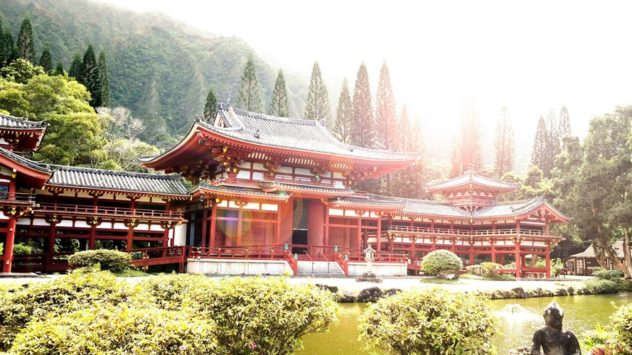Pre-Reading Questions:
- Why do you think people go to a museum?
- What type of entertainment do you do in your free time?
Vocabulary:
- generation /jen-uh-REY-shuh n/
- museum /myoo-ZEE-uh m/
- symbolize /SIM-buh-lahyz/
- performance art /per-FAWR-muh ns ahrt/
- ingredient /in-GREE-dee-uhnt/
[noun] – all the people of about the same age within a society or within a particular family
The royal crown is passed down to this generation’s queen.
[noun] – a building where objects of historical, scientific, or artistic interest are kept
All the students were amazed by Van Gogh’s paintings in the museum.
[verb] – to represent something
The color blue symbolizes the sky and sea.
[noun] – a type of theatre entertainment in which the artist’s personality and the way in which they create and develop their ideas form part of the show
The theater club is preparing a love story for the performance art play next month.
[noun] – a food that is used with other foods in the preparation of a particular dish
Ana wants to buy all the ingredients for the party foods online.
Kyocera Museum of Arts in Kyoto City presents national treasures like artifacts, handwritings, crafts, paintings, sculptures and other treasures in Kyoto. Incredible artworks showcase traditional techniques and skillful hand-made creations that absolutely mold the prosperous history of Japan treasures.
Ancient houses, temples, and castles architecture symbolize the great artistry in Japan history. During the Jomon period, the Japanese made use of timberwood to create a strong base for earthquakes. When western architecture began, Japanese architecture was refined into a modern style.
The entertainment world of theatrical play represents Japanese history in performance arts in terms of traditional music and dance presentations. UNESCO awarded the title Intangible Cultural Heritage of Humanity to ‘kabuki’ as a dance-drama theater shows dynamic styles of acting. As well as the outstanding puppet theater called ‘bunraku’. Bunraku performs classic love stories, tales, history events, and legends. Also, bunraku puppets were controlled by puppeteers instead of threads to make lifelike expressions and actions.
Japanese fashion is known all throughout the globe and it’s no doubt that even the traditional kimono of Japan was being used on all occasions and as fashion design in this modern era. Silk, wool, or synthetic fabric are common materials to weave a kimono. A casual kimono called ‘yukata’ and being paired with wooden slippers called ‘geta’ are typically worn during summer.
Japanese cuisine is entitled for Intangible Cultural Heritage of Humanity by UNESCO because of its impressive cooking mastery and Japan islands’ natural ingredients. Traditional Japanese cuisine known as ‘washoku’ stands for ‘wa’ as Japan and harmony, and ‘shoku’ for food and to eat. It is defined as all Japan’s natural ingredients are harmoniously mixed and skillfully presented.
Japan’s rich culture indeed incorporates nature and artistic hands. People impart history by appreciating one’s heritage. And in this way, people would have the pride to share the experience of discovering Japan’s culture.
True or False:
- Japanese culture entirely absorbed contemporary and traditional art for over 1,000 years.
- Japanese used stones for building foundations in the Jomon period.
- UNESCO awarded kabuki the title for Intangible Cultural Heritage of Humanity.
- Kimono is usually made up of silk, wool or synthetic fabric.
- Traditional Japanese cuisine is also known as ‘washoku’.
Vocabulary Check:
Complete the sentences by using the words in the box.
| generation | museum | symbolize | performance art | ingredient |
- The man who helped you with nothing in return _____ real kindness.
- All of us will go to the _____ tomorrow to see the ancient jewelry.
- My son will perform in a _____ show in their school.
- This _____ is fresh and tasty.
- Our society in this _____ generation is technologically competent.
